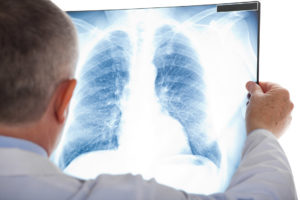Health Effects
Respiratory Health Effects of Flavors
Principal Investigator(s): Maciej L. Goniewicz, Roswell Park Comprehensive Cancer Center
More information about the respiratory health hazards of the flavorings used in tobacco products would  be useful. The goal of this project is to characterize the respiratory health effects — including inflammation, biomarkers of exposure, and clinical markers with relevance to disease endpoints — attributable to the use of flavored tobacco products. Two studies will evaluate daily ENDS users as they switch among various flavors.
be useful. The goal of this project is to characterize the respiratory health effects — including inflammation, biomarkers of exposure, and clinical markers with relevance to disease endpoints — attributable to the use of flavored tobacco products. Two studies will evaluate daily ENDS users as they switch among various flavors.
Study aims:
(1) to assess changes in respiratory symptoms and biomarker levels in ENDS users during spontaneous switching between flavors (Study 1);
(2) to evaluate respiratory symptoms in ENDS users switching from flavors of potentially high toxicity to flavors of potentially low toxicity (Study 2); and
 (3) to characterize ENDS users’ preferences, selection, patterns of use and switching between various flavors (Studies 1&2). In Study 1, researchers will establish a cohort of 176 ENDS users (ages 18-54) to assess changes in respiratory symptoms during spontaneous switching among flavors over one year. In Study 2, researchers will conduct a randomized, parallel-group open-label trial to evaluate respiratory symptoms in 216 ENDS users (ages 18-54) switching from higher-toxicity to lower-toxicity flavors (as identified by Project 1). Endpoints will include clinically relevant biomarkers of inflammation and oxidative stress, changes in respiratory function, subjective respiratory symptoms and side-effects, and expression of immune and inflammatory response genes in nasal epithelial cells. Results may inform future regulatory activities related to flavors.
(3) to characterize ENDS users’ preferences, selection, patterns of use and switching between various flavors (Studies 1&2). In Study 1, researchers will establish a cohort of 176 ENDS users (ages 18-54) to assess changes in respiratory symptoms during spontaneous switching among flavors over one year. In Study 2, researchers will conduct a randomized, parallel-group open-label trial to evaluate respiratory symptoms in 216 ENDS users (ages 18-54) switching from higher-toxicity to lower-toxicity flavors (as identified by Project 1). Endpoints will include clinically relevant biomarkers of inflammation and oxidative stress, changes in respiratory function, subjective respiratory symptoms and side-effects, and expression of immune and inflammatory response genes in nasal epithelial cells. Results may inform future regulatory activities related to flavors.

